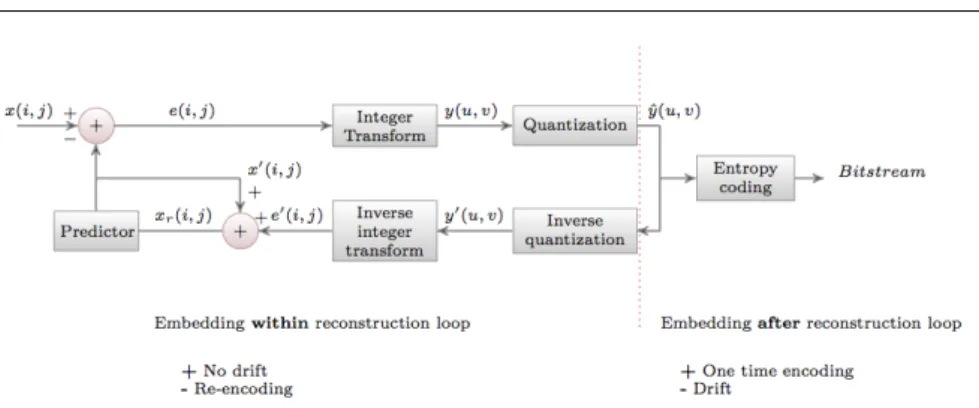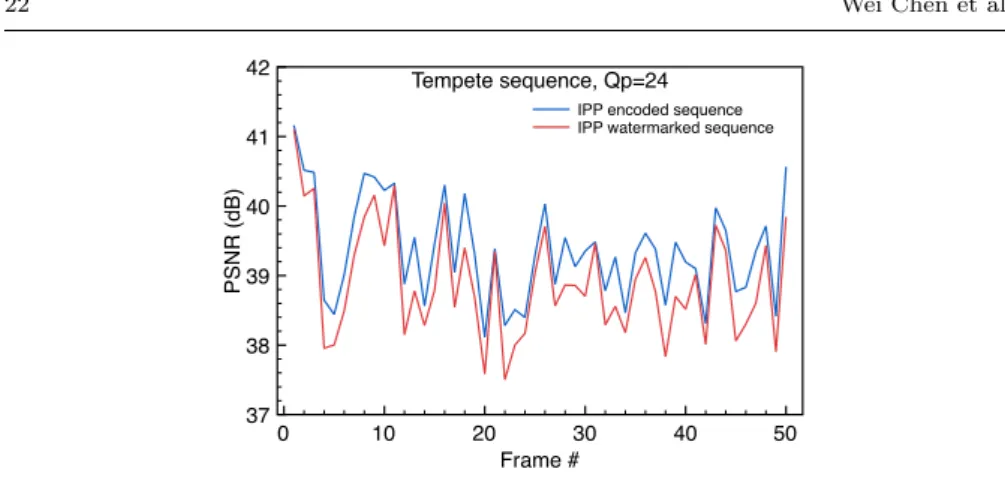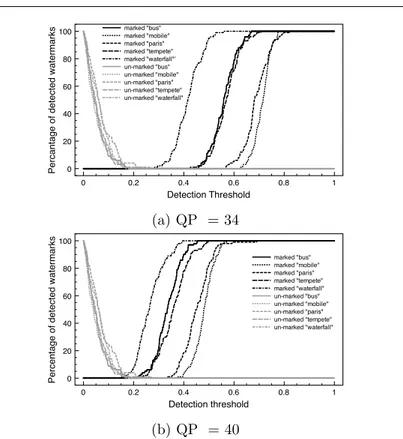Robust drift-free bit-rate preserving H.264 watermarking
Texte intégral
Figure


Documents relatifs
However, the primary objective of this study was to evaluate the feasibility of a traitor tracing scheme using a Tardos code but also to propose a watermarking solution integrated to
A practical security example: the traitor tracing (active finger- printing).. 4 Conclusion
Tardos probabilistic fingerprinting code is embedded in H.264/AVC video signals using spread spectrum watermarking technique.. Different linear and non-linear collusion attacks
H.264/AVC using spread spectrum (SS) embedding while taking into account the reconstruction loop.. OUR APPROACH: The proposed solution consists of the
Wang, “Robust Digital Video Watermarking Scheme for H.264 Advanced Video Coding Standard,” Journal of Electronic Imaging 16(4), 2007... H.264 video watermarking - Marc Chaumont
For the non-zero QTCs, in intra frames we exploit the spatial masking and in inter frames we exploit motion and texture masking for watermark em- bedding.. There is not
I Embedding watermark inside reconstruction loop avoids mismatch between encoder and decoder and also takes into account the bitrate/quality tradeoff because of watermarking of
The knowledge of the conventions, customs, beliefs, and the different aspects of civilization is indisputably an integral part of foreign language learning, and





